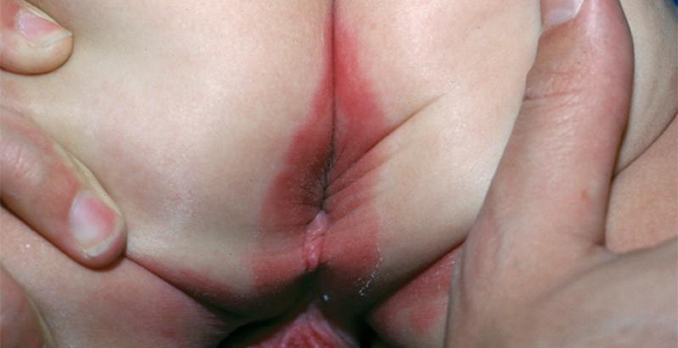- Inverse psoriasis
- Candidiasis
- Seborrheic dermatitis
- Pinworm infection
Diagnosis
Perianal streptococcal infection.
Learnings
Perianal streptococcal cellulitis, or perianal streptococcal dermatitis (PSD), is a fairly common, often unrecognized variant of cutaneous streptococcal infection. It may present as chronic diaper dermatitis or, alternatively, as acute symptomatic cellulitis. Affected children usually range in age from 6 months to 10 years, though cases have been reported in both adolescents and adults. Presenting symptoms include painful defecation, fecal hoarding behavior, and incontinence. Blood-streaked stool and anal fissures may also be noted. Balanitis may occur in male patients. Vulvovaginal involvement has been noted in female patients but is less commonly reported. Guttate psoriasis may be precipitated by PSD. Fever and acral scarlatiniform desquamation have also been reported.
Penicillin is the antibiotic of choice. A post-treatment culture should be obtained to confirm a cure, because PSD can cause post-streptococcal glomerulonephritis. A urinalysis should be obtained about 1 month after treatment is complete. It may also be helpful to obtain cultures from family members, because they may be carriers.
What to Look For
Check for perianal erythema and moist superficial erosions with well-defined margins. The genitalia may be involved, and fissures and scaling plaques may be present.
Acknowledgment: Image courtesy of Logical Images, Inc. (www.VisualDx.com/JUCM)

